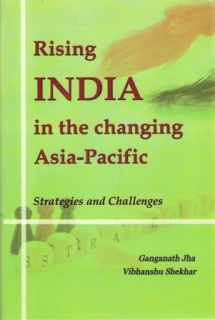
Rising INDIA in the changing Asia-Pacific: Strategies and Challenges
Ganganath Jha , Vibhanshu Shekhar
Publisher: Pentagon PressSorry!
It looks like the publisher has not made this title available in USA / North America
“A change is coming over the scene and now Asia is again finding itself.
We live in a tremendous age of transition and already the next stage takes
shape when Asia takes its rightful place with other continents.â€1
Jawaharlal Nehru, Asian Relations Conference in 1947, New Delhi.
Today, the Asia-Pacific stands on the cusp of a momentous shift, stirring intense
debate and discussion among the academia and the policy-makers alike. Along
with a revolution in the nature and dynamics of economic integration, the region
is enjoying enormous swelling in its politico-strategic significance at the global
level. Moreover, the region offers what ASEAN Secretary General, Surin Pitsuwan,
calls ‘the world’s largest business space.’ The region is more integrated than ever
through cooperative activities and a plethora of institutional networks built around
ASEAN. While the Asia-Pacific is emerging as an important player in global
governance discourse, countries of the region are emerging as stakeholders and
drivers in the success stories of the region. The multilateral engagement has
undergone significant transformation in terms of geo-political outlook, agenda
and mandate of institutionalized cooperation in the region. In fact, the idea of
cooperation has never ever been so powerful and profound in the near history of
the Asia-Pacific. The signing of the India-ASEAN FTA in goods and India’s greater
economic integration with the region further testify to the logic of shared
prosperity.